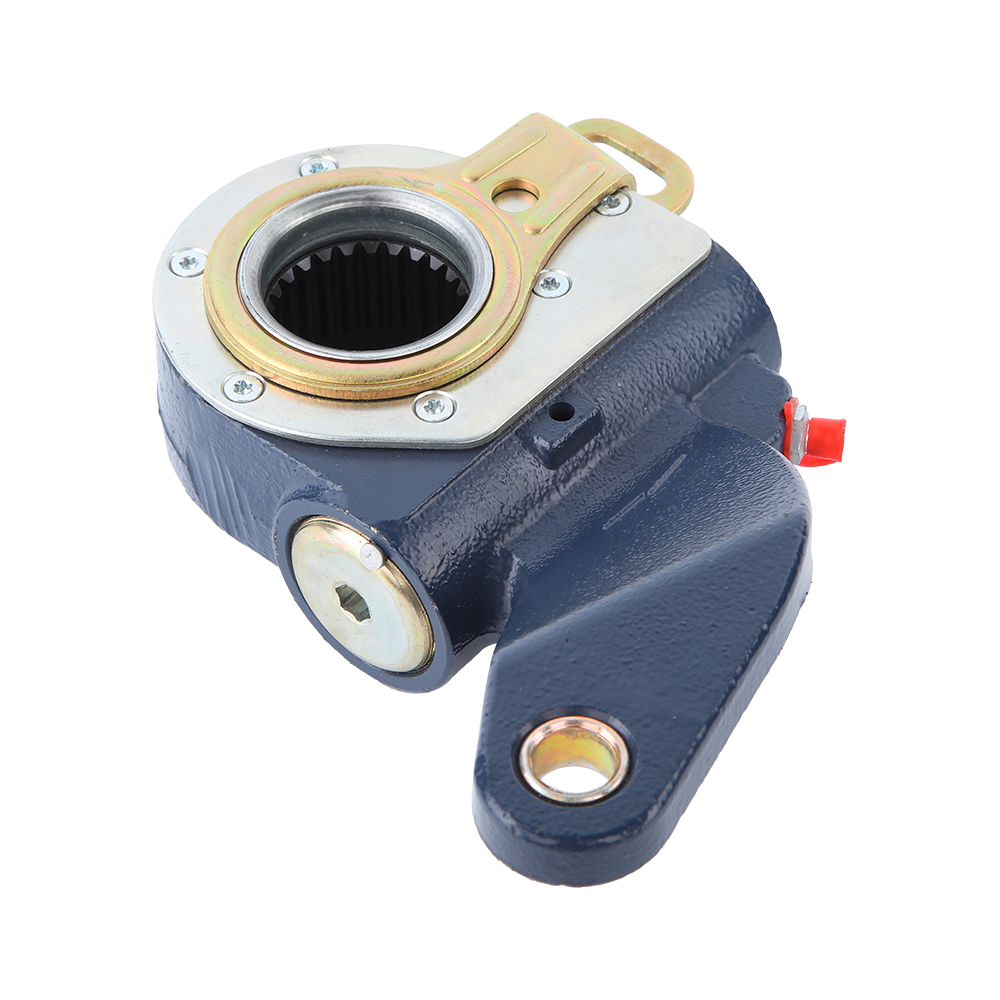Additional Components: Automatic slack adjusters introduce supplementary components beyond the standard manual ones, necessitating a thorough understanding of their roles and interactions within the braking system. The control arm serves as a pivotal link between the slack adjuster and the brake chamber, transmitting force and facilitating movement during braking events. The push rod translates the motion generated by the control arm into linear movement, exerting force on the brake actuator to engage the brake pads or shoes. The clevis assembly provides a secure connection between the push rod and the brake actuator, ensuring optimal transmission of force while accommodating potential adjustments. Proper installation of these components is paramount to harness the full capabilities of automatic slack adjusters and uphold braking system integrity.
Alignment: Achieving precise alignment between the automatic slack adjuster and the brake system components is essential to mitigate potential sources of friction or misalignment that could compromise performance or lead to premature wear. Alignment considerations encompass the orientation of the control arm, push rod, and clevis assembly relative to other brake system elements, such as the brake chamber and actuator. Meticulous attention to alignment during installation minimizes mechanical stress, enhances operational efficiency, and prolongs the service life of critical components.
Mounting Position: Automatic slack adjusters necessitate specific mounting positions to accommodate the unique configuration of their associated components and ensure optimal functionality within the broader brake system architecture. Mounting position requirements may vary based on factors such as vehicle make and model, brake system design, and manufacturer specifications. Adhering to prescribed mounting positions facilitates seamless integration, minimizes potential clearance issues, and promotes uniform distribution of forces during braking maneuvers, thereby enhancing overall system reliability and performance.
Adjustment Sensitivity: Fine-tuning the adjustment sensitivity of automatic slack adjusters is a critical aspect of the installation process, as it directly influences the responsiveness and efficacy of the automatic adjustment mechanism. Adjustment sensitivity refers to the rate at which the slack adjuster compensates for brake wear and maintains optimal clearance between the brake linings and drums or discs. By calibrating the adjustment sensitivity to align with specific operational requirements and environmental conditions, users can optimize braking performance, minimize stopping distances, and mitigate the risk of brake-related incidents or failures.
Air Brake System Integration: Integrating automatic slack adjusters within vehicles equipped with air brake systems entails meticulous coordination of pneumatic controls, air lines, and auxiliary components to ensure seamless operation and compliance with regulatory standards. Proper integration encompasses tasks such as routing air lines, installing pneumatic fittings, and configuring control valves to facilitate communication between the automatic slack adjuster and the broader air brake system infrastructure. Thorough integration is essential to maintain optimal pneumatic pressure, facilitate rapid response times, and uphold system safety and reliability.
Calibration: Calibration procedures are integral to optimizing the performance and functionality of automatic slack adjusters, particularly in applications where precise adjustment parameters are essential for safe and efficient operation. Calibration involves fine-tuning various parameters, such as adjustment sensitivity, stroke length, and response times, to align with specific vehicle characteristics, operating conditions, and regulatory requirements. By meticulously calibrating automatic slack adjusters during the installation process, users can ensure consistent braking performance, minimize the risk of brake-related incidents, and extend the service life of critical components.
80009/9454200138 S-ABA europe automatic slack adjuster for benz truck


 English
English русский
русский Español
Español Deutsch
Deutsch
.png?imageView2/2/format/jp2)
-1.png?imageView2/2/format/jp2)
.png?imageView2/2/format/jp2)
-1.png?imageView2/2/format/jp2)

-1.png?imageView2/2/format/jp2)
-1.png?imageView2/2/format/jp2)


